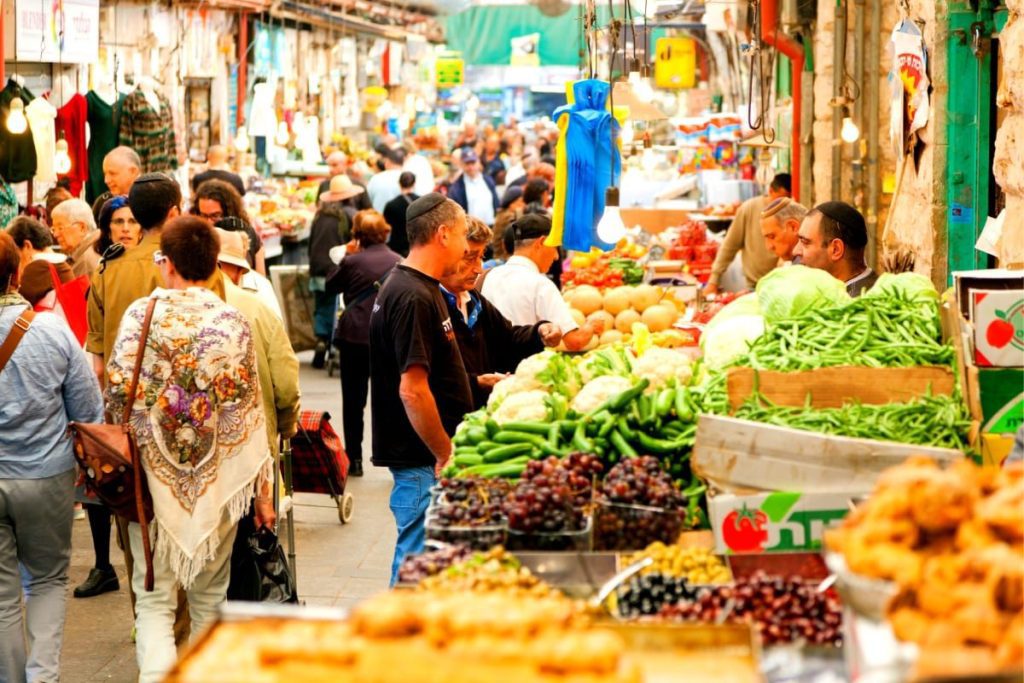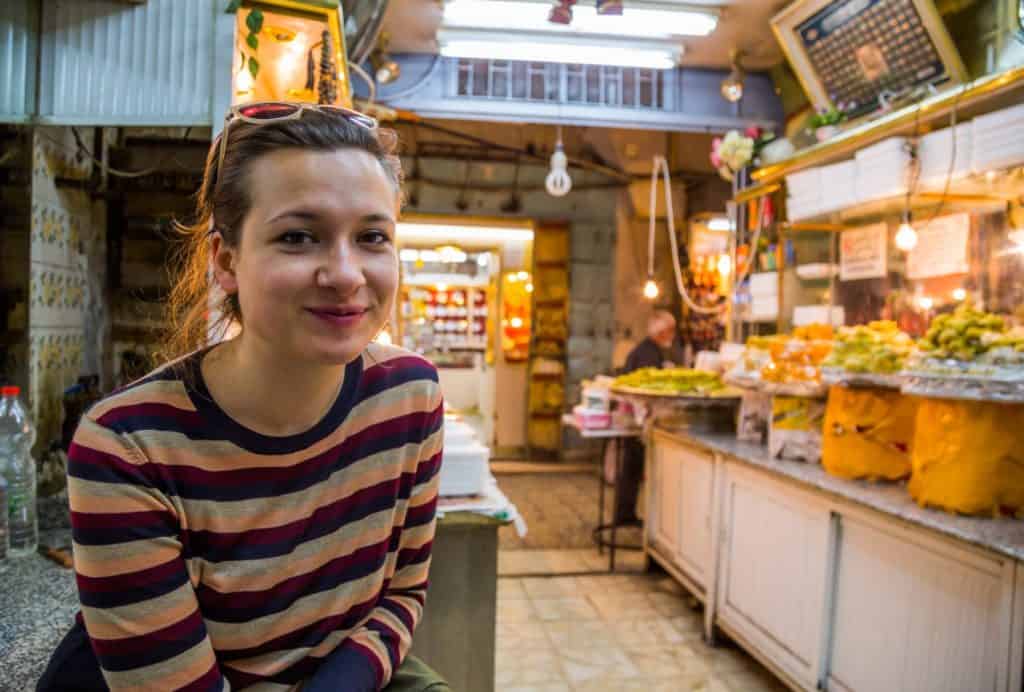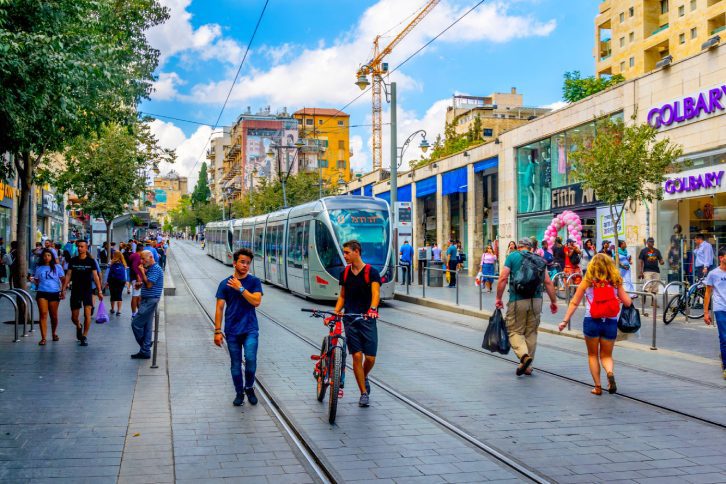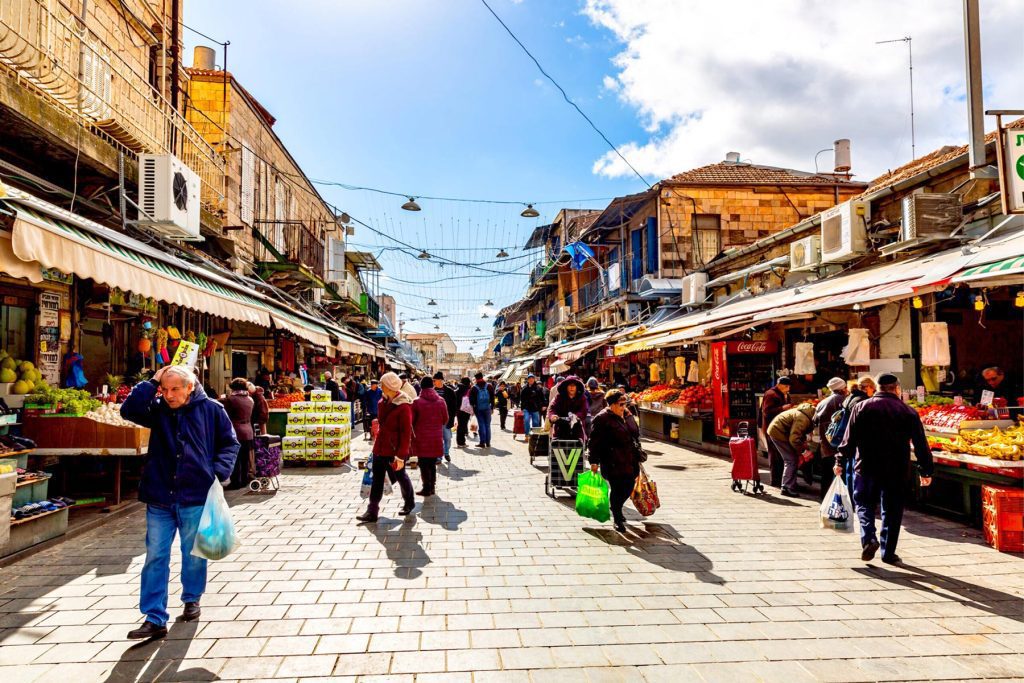Mahane Yehuda Food Market, is a great marketplace in Jerusalem. Popular with locals and tourists alike, the market’s more than 250 vendors! sell fresh fruits and vegetables; baked goods; fish, meat, and cheeses; nuts, seeds, and spices; wines and liquors; clothing and shoes; and housewares, textiles, and Judaica. In short a cool place to visit and get yourself exposed to the local vibe! Trust me, as a private tour guide in Israel, I take my guests all the time to eat there and just walk around because it’s so much fun.

More About Mahane Yehuda Food Market
In and around the Mahane Yehuda Food Market are delicious falafel stands, savory shawarma that you would destroy in a second, sweet kanafeh, baklava, halva, and the famous Jerusalem mixed grill stands! Not to mention the fresh juice bars, cafes, and restaurants. The color and bustle of the marketplace are accentuated by vendors who call out their prices to passersby.
Eateries in Jerusalem Food Market

On Thursdays and Fridays, the marketplace is filled with shoppers stocking up for Shabbat until the Friday afternoon sound of the bugle signifies the market will close for the Sabbath. In recent years, the ‘Shuk’ (as it is called by locals) has emerged as another Jerusalemite nightlife center, with restaurants, bars, and live music.
The History of the Market
The Mahane Yehuda Food Market slowly began to form in the late 19th century (Ottoman period); when Arab peasants from the villages of Lifta, Deir Yassin, Sheikh Bader, and other towns west of Jerusalem began to bring their agricultural produce for sale on the Jaffa Road, near the Mahane Yehuda neighborhood. At that time, an empty and spacious plot of land was owned by the Haim Aharon Valero family, a wealthy Spanish Jewish family.
So, the peasants took advantage of the space to offer their products to passers-by and the Jewish residents of the nearby Nachlaot. As a result, the success of the makeshift market was almost self-evident: the residents of the Nachlaot spared themselves the long walk to the distant Old City markets, as did the residents of the Arab villages.
Ben Yehuda Street

Gabriel Cohen, a member of the nearby Beit Yaakov neighborhood, described the market in those days in his book “Beit Avinu”:
It was a market without special arrangements. Baskets and boxes were stacked side by side in the open field. Familiar vegetable growers and sellers often sat by their wares and waited for the buyers. The buyers were Jews, while the sellers were Arab peasants from the villages near Jerusalem. And so the two peoples stood opposite each other, which gave the market a unique character.
Jerusalem Food Tour

Jewish housewives tried to speak Arabic, and the Arab peasants tried to eliminate their goods in Yiddish. The commotion was great, and the children tried to benefit amidst the shouting, bargaining, trafficking, and cursing. It was challenging to carry a fresh cucumber, green onion, or lettuce leaf to your palate.

